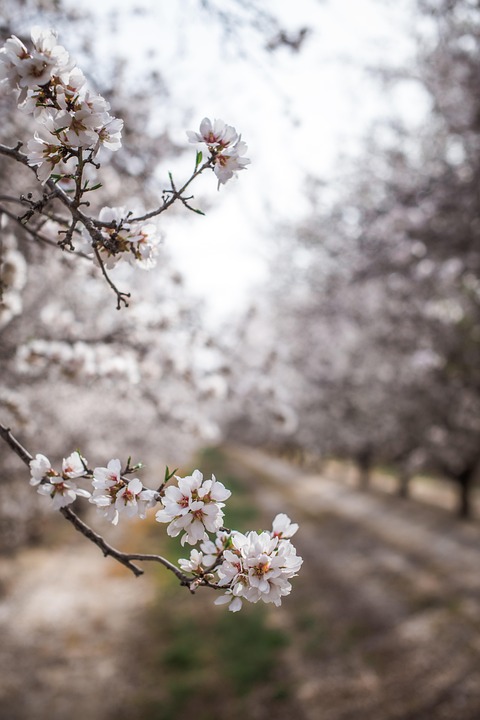## Dirt to Dining: Sustainable Plants That Are Good for You and the Earth
Picture this: it’s early morning, the sun is casting a soft golden hue over dew-kissed leaves, and the distinct earthy aroma of freshly tilled soil fills the air. With a small garden spoon in hand and a wide-brimmed hat perched atop my head, I carefully sprinkle heirloom seeds into nutrient-rich beds. It’s not just a hobby; it’s a lifestyle rooted in the belief that the food we grow can nourish not only our bodies but also our planet. Sustainable gardening and farming are at the heart of the Dirt to Dining philosophy—a vibrant journey from the soil beneath our feet to delicious, nutritious meals on our plates.
In this article, we’ll dive into sustainable plants that are beneficial not only for your health but also for Mother Earth. These plants are champions of biodiversity, support ecosystems, and most importantly, they’re delicious!
### Understanding Sustainability in Gardening
Sustainable gardening is all about creating a harmonious relationship between plants, animals, and the environment. This approach emphasizes eco-friendly practices, promotes biodiversity, and reduces the carbon footprint of our food systems. By nurturing plants that not only thrive in your local ecosystem but also contribute positively to it, you can support the environment while enjoying a bountiful harvest.
### Star Players in Sustainable Gardening
#### 1. **Heirloom Tomatoes**
Heirloom tomatoes are not just a colorful addition to your garden; they are a treasure trove of flavor and biodiversity. These seeds have been passed down through generations, boasting unique tastes and textures. Unlike commercial varieties that often rely on pesticides, heirloom tomatoes can thrive organically. Plus, by planting heirlooms, you’re helping to preserve genetic diversity in our food supply.
**Health Benefits:** Rich in vitamins A, C, and K, heirloom tomatoes are packed with antioxidants that support heart health and contribute to glowing skin.
#### 2. **Kale**
Known as a “superfood,” kale isn’t just nutritious; it’s also incredibly versatile. This leafy green thrives in cooler climates and has a long growing season. You can enjoy it raw in salads, sautéed as a side, or blended in smoothies.
**Health Benefits:** Kale is a nutritional powerhouse, loaded with vitamins A, C, and K, along with fiber and antioxidants.
#### 3. **Blueberry Bushes**
Planting blueberry bushes not only provides you with delicious snacks but also acts as a natural pest deterrent. These bushes thrive in acidic soils, making them perfect for landscaping in combination with other plants that can help adjust soil pH.
**Health Benefits:** Blueberries are low in calories but high in nutrients, famed for their high antioxidant content which supports brain health.
#### 4. **Comfrey**
Often considered a “dynamic accumulator,” comfrey draws nutrients from deep within the soil and brings them to the surface, benefiting other plants nearby. Its large leaves can also be composted or used to make potent fertilizers.
**Health Benefits:** Rich in vitamins and minerals, comfrey is also known for its medicinal properties, often used in natural remedies for bruises and inflammation.
#### 5. **Nasturtiums**
These vibrant flowers brighten up any garden and are entirely edible! Nasturtiums are known for attracting beneficial insects and pollinators, which can help improve the health of your entire garden ecosystem.
**Health Benefits:** They’re packed with vitamin C, iron, and antioxidants. Plus, their peppery flavor adds a unique twist to salads!
### The Importance of Biodiversity
Planting a variety of crops can help deter pests and diseases, ensuring a healthier garden. Biodiversity is essential in creating resilient ecosystems. By incorporating companion planting—where certain plants benefit each other—you’ll create a thriving environment that sustains both plants and local wildlife. For example, pairing tomatoes with basil can enhance their growth and flavor, while repelling harmful pests.
### Pro Tips for Sustainable Gardening
1. **Start with Native Plants:** Local plants have adapted to the climate and soil conditions, requiring less water and fewer resources. These are also beneficial for local pollinators and wildlife.
2. **Use Organic Practices:** Minimize chemical fertilizers and pesticides. Instead, consider natural alternatives like compost, manure, or fish emulsion. These enrich the soil and help plants thrive.
3. **Implement Crop Rotation:** Changing where you plant different crops each year prevents soil depletion and reduces pest problems.
4. **Collect Rainwater:** Set up a rain barrel to capture water for irrigation. It’s eco-friendly and can dramatically reduce water bills.
5. **Encourage Pollinators:** Create a welcoming environment for bees and other pollinators by planting a mix of nectar-rich flowers. This can increase the productivity and health of your garden.
### Delicious Recipes from Your Garden
Transform your sustainable harvest into delightful dishes!
#### **Heirloom Tomato Salad**
*Ingredients:*
– 2 cups heirloom tomatoes, chopped
– 1 cucumber, diced
– ¼ red onion, thinly sliced
– Fresh basil, chopped
– Olive oil and balsamic vinegar for dressing
– Salt and pepper to taste
*Method:*
Combine all ingredients in a bowl, dress with olive oil and vinegar, season to taste. Enjoy this fresh summer delight straight from your garden!
#### **Kale and Blueberry Smoothie**
*Ingredients:*
– 1 banana
– 1 cup kale, stems removed
– 1 cup blueberries
– 1 cup almond milk
– 1 tablespoon honey (optional)
*Method:*
Blend all ingredients until smooth. This nutrient-packed drink is perfect for breakfast or a mid-day snack.
### Conclusion: Nourish Yourself and the Earth
The journey from dirt to dining is one of curiosity, connection, and collaboration with the earth. By choosing sustainable plants for your home garden, you can enjoy delicious, nutritious food while contributing to a healthier planet. As you cultivate your garden, remember that each seed you plant is a step towards fostering biodiversity and sustainability.
Embrace the art of sustainable gardening to enjoy the fruits of your labor. With a little bit of love, patience, and dedication to the earth, you can create a flourishing sanctuary that not only nourishes your body but also cares for our planet. Happy gardening!
### In Summary
As we embrace the concept of “Dirt to Dining,” let’s make a conscious effort to choose sustainable plants. The choices we make in our gardens reflect our values, so let’s cultivate positivity, health, and a vibrant ecosystem for future generations.
—
With these tips in hand and a heart thirsty for adventure, you’re ready to embark on your sustainable gardening journey. Remember, every plant counts, and with each seed we sow, we’re creating a brighter future for ourselves and our planet!



